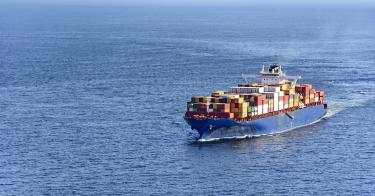The Jones Act is not working and has never delivered a competitive edge. The United States has lost its global competitiveness in shipbuilding. China, on the other hand, has constructed a premier merchant fleet while investing in more than 100 ports in 63 countries. Under the Jones Act, the U.S. merchant marine cannot compete with large Chinese corporations such as COSCO. Conversely China’s “civ-mil” fusion harmonizes civilian shipping activities with military requirements. The Chinese are also not burdened with costly U.S. environmental, labor, and special interest regulations. The Jones Act and ad valorem taxes on U.S.-flagged vessels for overseas ship maintenance have prevented the U.S. shipping industry from competing globally and hastened its decline. The U.S. Jones Act-compliant fleet had 257 ships in 1980—and only 93 ships today.
Yet, the Jones Act makes it more expensive to maintain this fleet by requiring that these ships be U.S.-built, even while the withering fleet size has reduced U.S. capacity. The absurd consequence is that ships built in the U.S. now require maintenance in Chinese shipyards. This absurdity is compounded by the fact that the 93 remaining and aging U.S. ships would be of limited military use in wartime. Creating a wall of protection around the U.S. merchant navy has not worked, and the merchant fleet is in obvious decline as a result. This decline is in stark contrast to China’s fleet of 8,007 ships, the second largest fleet in the world by cargo-carrying tonnage. Chinese shipbuilders benefited from $132 billion in direct subsidies, as well as indirect subsidies and deregulation between 2010 and2018. Yet, on the U.S. side, simply subsidizing a fleet that operates under the stifling Jones Act will not revive a declining U.S. merchant marine.
The U.S. government needs to encourage industry to leverage innovation and technology. The goal is to increase industrial capacity, yet U.S. regulators who implement the Jones Act prevent new innovators from entering the market. As General Stephen Lyons stated in his congressional testimony, it is 26 times more costly to build ships domestically in the U.S. than to purchase them abroad. It is not just a question of labor costs (although Chinese labor is becoming less inexpensive). Even if lower Chinese labor costs are removed from the assessment, U.S. regulations and restrictions still make American shipping 18-fold more expensive. The vast majority of this differential only arose after the Jones Act created a protective wall that stifled competitive forces for U.S. shipbuilders.
As an intermediate solution, there should be more waivers for South Korea, Japan, and Greece as strong maritime allies under the Jones Act. Realistically, it is not possible in the short term to outperform China in the maritime sphere, but the U.S. can, in coordination with its allies, alter the logistical paradigm. At a minimum, the goal should be to avoid the reoccurrence of the obvious failures of shipping supply chains during the COVID-19 pandemic.
The Merchant Marine needs to become globally competitive, and it needs to innovate with new technologies, which can happen with deregulation. Protectionism breeds weak and uncompetitive industries, while innovation and renewed competitiveness would eventually make the Jones Act unnecessary. The U.S. has revolutionized shipping before with containerization, and it can do that again with modularization (which is resisted by labor unions).
The solution to the current predicament has already been articulated in The Heritage Foundation’s special report, Regaining U.S. Maritime Power Requires a Revolution in Shipping. The authors argue for a “blue ocean strategy,” under which ships would circumvent the Jones Act by offloading cargo to ships waiting 12 nautical miles away from the U.S. shoreline. As container ships increase in size, the dated U.S. ports will struggle to cope with advanced cranes and increased depth and offloading areas. One could thus circumvent the Jones Act by offloading 12 nautical miles from the U.S. shore. Given that the U.S. cannot compete in global shipping under the Jones Act, it must supplant the Jones Act fleet, because it will continue to wither away, as it has been for years.
This piece originally appeared in the Center for Maritime Strategy





